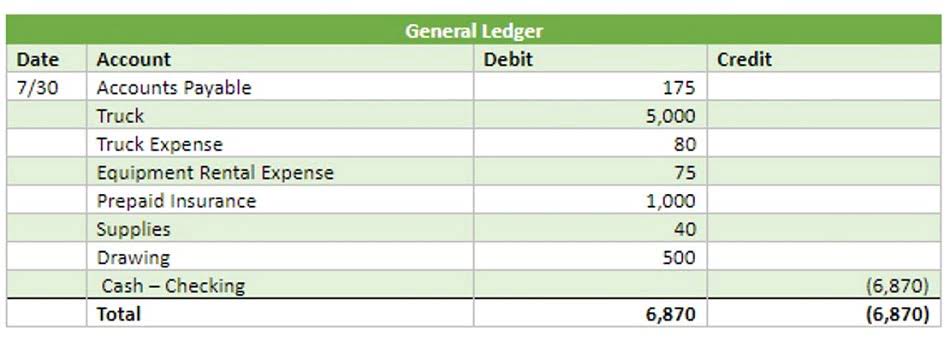
We cannot debit bad debt because we have already recorded bad debt to cover the percentage of sales that would go bad, including this sale. Remember that allowance for doubtful accounts is the holding account in which we placed the amount we estimated would go bad. This amount is just sitting there waiting until a payroll specific accounts receivable balance is identified. Once we have a specific account, we debit Allowance for Doubtful Accounts to remove the amount from that account.
Direct Write-Off Method: Managing Bad Debt Effectively

It is often at odds with the principles of conservative accounting and does not provide the most accurate picture of a company’s financial health. A bad debt expense is a loss that the company incurs related to the accounts receivable. It is an invoice that is uncollectible since the customer is unable to pay or not willing to pay back the amount for some reason and all attempts of recovery have been made by the company. Timing plays a significant role in this method, as the expense is recorded only upon confirmation of non-payment.
- In other words, it can be said that whenever a receivable is considered to be unrecoverable, this method fully allows them to book those receivables as an expense without using an allowance account.
- This reduces the accounts receivable and recognizes the expected loss from the uncollectible amount.
- It allows businesses to react quickly to non-payment issues and take appropriate actions to recover the outstanding amounts.
- Assume a company has invoiced its customer for $10,000 but realizes it will not receive payment.
Allowance method
- In other words, bad debt expenses can be written off from a company’s taxable income on their tax return.
- We must make sure to show that Joe Smith paid the amount he owed, not just the fact that the company received some cash.
- It’s essential for stakeholders to understand the implications of this method and consider the benefits of more accurate alternatives like the allowance method for a clearer financial picture.
- You will find that the revenue and profit of this transaction are recognized in the previous years, while the loss that arises will affect the current year’s income statement.
- Financial analysts and accountants often advocate for the Allowance Method due to its ability to produce financial statements that better represent a company’s operational reality.
- At the end of the financial year, XYZ Ltd. found that two of its customers, Customer A and Customer B, had failed to pay their outstanding balances of $8,000 and $5,000, respectively.
This occurs when customers, due to various reasons, are unable or unwilling to pay the amounts they owe for goods or services purchased on credit. Bad debt is an inevitable risk in any business that extends credit to its customers. Since using the direct write-off method means crediting accounts receivable, it gives a false sense of a company’s accounts receivable. While the Direct Write-Off Method may offer simplicity, it can also introduce volatility and a lack of clarity in financial reporting. It’s a method that can be both a boon for its ease of use and a bane for its potential to misrepresent a company’s financial status. As such, it remains a controversial topic in the realm of financial analysis, with proponents and detractors continuing to debate its merits and drawbacks.
Impact on Financial Statements
Implementing the allowance method can enhance the accuracy of financial reporting by smoothing out income fluctuations. As bad debts are anticipated and accounted for in advance, the income statement reflects a more consistent portrayal of a company’s financial health. This consistency can be beneficial for stakeholders, such as investors and creditors, seeking to evaluate a company’s operational efficiency and predict future cash flows. Furthermore, adhering to this method can ensure compliance with Generally Accepted Accounting Principles (GAAP), which often favor the allowance method for its ability to uphold the matching principle.

You own a car auto shop and install a new engine in a customer’s car for $3,000. After attempting to contact the customer for the invoice of $3,000, you have yet to hear back for months. In this case, the accounts receivable account is reduced by $3,000 and is recorded as a bad debt expense. Therefore, the business would credit accounts receivable of $10,000 and debit bad debt expense of $10,000. If the customer is able to pay a partial amount of the balance (say $5,000), it will debit cash of $5,000, debit bad debt expense of $5,000, and credit accounts receivable of $10,000.
The two models used for such provisions are the direct write-off method accounting and the allowance method. This direct write-off method shows that the company has recognized the uncollectible account as a loss and will direct write-off method not attempt to collect the debt any further. By the end of the year, it became clear that the debt was uncollectible, so the company decided to write off the debt. On December 31, ABC Inc. recorded a credit of $500 to Accounts Receivable and a debit of $500 to Bad Debt Expenses. In January 2020, the company issued an invoice to one of its customers, David Smith, for $500.

Discover more from Accounting Professor.org
- The Allowance Method and the Direct Write-Off Method are two different approaches used in accounting to record and report bad debts.
- Most of the time, the allowance method is better than the direct write-off method for keeping track of bad debts.
- Default in debt provided to a client or a third party can be a major pain point for businesses.
- Another attribute of the direct write-off method is the immediate recognition of bad debts.
- In contrast, the direct write-off method does not require any estimation as bad debts are only recognized when they are confirmed.
Creating the credit memo creates a debit to a bad debt expense account and a credit to the accounts receivable account. As you can see, the direct write-off method involves a direct write-off of the uncollectible amount from the accounts receivable and a corresponding credit to the allowance for bad debts account. This reduces the accounts receivable and recognizes the expected loss from the uncollectible amount. It is a way to count bad debts and losses from accounts that can’t be paid back. Businesses use this method to show losses on their financial statements as soon as they know they won’t be able to get money from a customer.
- It is also commonly used for tax reporting purposes under IRS rules in the United States.
- It can also have tax implications, so consult your accountant to determine the best course of action.
- Bad debt expense is the way businesses account for a receivable account that will not be paid.
- However, financial analysts often take issue with this method due to its potential to distort a company’s financial health.
- Under this method, businesses estimate the amount of uncollectible accounts receivable and create an allowance for doubtful accounts.
- We do not record any estimates or use the Allowance for Doubtful Accounts under the direct write-off method.
Also, the direct write-off method doesn’t consider how uncertain it is that accounts receivable will be paid. GAAP requires companies to use the allowance method, which estimates bad debts based on past experience and adjusts the estimate as needed. Under the direct write-off method, bad debts are not recognized until they are actually written off, which may be after the revenue has been recognized. This throws off the timing of a company’s income and expenses and doesn’t show the real financial picture of how it runs. The origins of the direct write-off method can be traced back to the early days of Online Bookkeeping accounting when businesses used various methods to account for bad debts and uncollectible accounts.